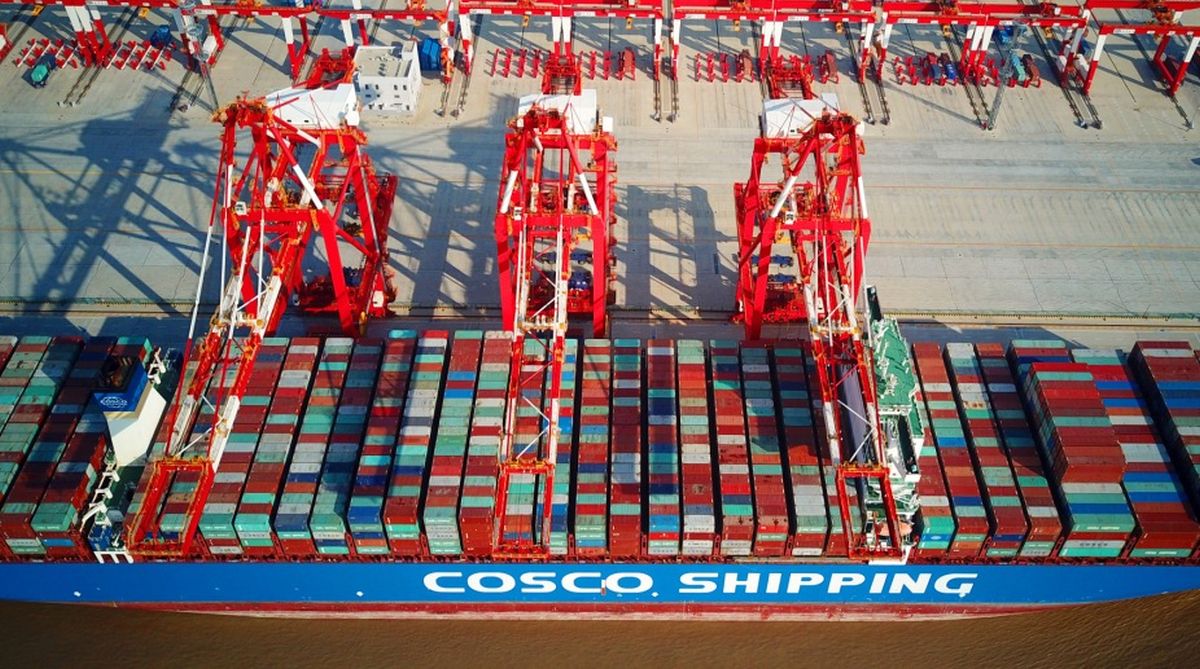Government’s relaxing of norms for transshipment has not only helped India arrest a sizeable chunk of its container cargo going to ports like Colombo, Singapore, and Jebel Ali but also forced a few foreign ports to cut rates, according to a top official.
India has been trying hard to arrest diversion of container cargo to transshipment hubs at foreign ports.
In May, the Centre relaxed cabotage norms allowing foreign ships, chartered by Indian citizens or companies, to ply on local routes for transshipment purposes.
After the relaxation, India is witnessing an upswing in transshipment volumes and if the trend continues it would emerge as a transshipment hub, Shipping Secretary Gopal Krishna told PTI.
“Diversion of Indian cargo for transshipment to neighboring foreign ports has definitely come down and its impact will be visible by the end of the fiscal and it is bound to substantially come down in the next fiscal,” he said.
The figure is likely to reach 2 million tonnes, from about 0.8 MT and the trends have started showing, he said.
“The transshipment volumes in India has risen to 16,543 TEUs (twenty-foot equivalent unit) in July from 11,589 TEUs in June. This is a 43 percent jump in a month,” said Container Shipping Lines Association (CSLA) that represents 31 container ship lines.
CSLA Chairman Deepak Tewari told PTI: “The policy reform has been very encouraging for container ship lines and we are confident to take the 16,543 TEU volumes recorded in July to 200,000 TEUs within six to eight months time.”
The figures of transshipment within India are as low as 3,583 TEUs.
Had there been no cabotage relaxation, of the 16,543 TEUs, India would have lost 41 percent to Colombo, 22 percent to Singapore, 11 percent to Port Klang and 26 percent to others, CSLA estimates.
Various shipping lines are in the process of repositioning their routes which are decided annually, Krishna said, adding that once it is done the major impact will be visible.
A Shipping Association official said Colombo port was forced to cut transshipment rates by 9.5 percent post-India doing away with cabotage restrictions in May.
Credit rating agency ICRA has said that the government moves to relax cabotage restrictions will create a level playing field for foreign-flagged ships and is a long-term positive for ports.
The relaxations are positive from a transshipment perspective for the Indian ports, it said.
The government move was aimed at the not only arresting diversion of Indian container cargo to foreign ports but to create entrepreneurship in shipping operations while unfurling opportunities for citizens including former army and navy personnel with desired silks and knowledge to charter smaller feeder vessels and participate in the fast-growing container trade.
At present transshipment hubs at Singapore, Malaysia, Colombo and Jebel Ali near Indian coastline get about 33 percent of Indian container cargo which is aggregated there before being shipped to final destinations.
Transshipment of Indian cargo at foreign transshipment ports leads to traffic growth there and job creation in other countries, loss of revenue from Indian shippers in terms of port and logistics charges and loss of foreign exchange to foreign ports as the transshipment revenues and charges are collected from Indian exporters/importers by foreign ports.
Krishna said the policy in the first year, as per conservative approach, will result in at least 10 percent reduction of the Indian container cargo transshipment to foreign ports.
Ports like Vishakhapatnam, Kandla, Cochin, Tuticorin, Ennore, and Chennai are likely to benefit most initially.
As per estimates, Indian ports are likely to get an additional income of about Rs 200 crore on account of this.










